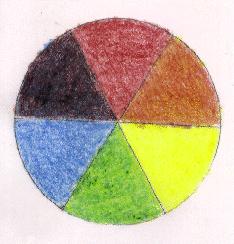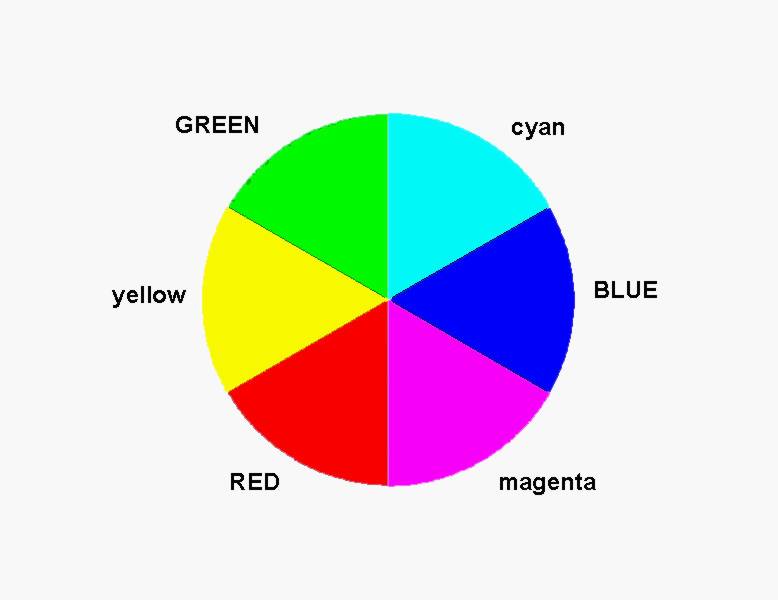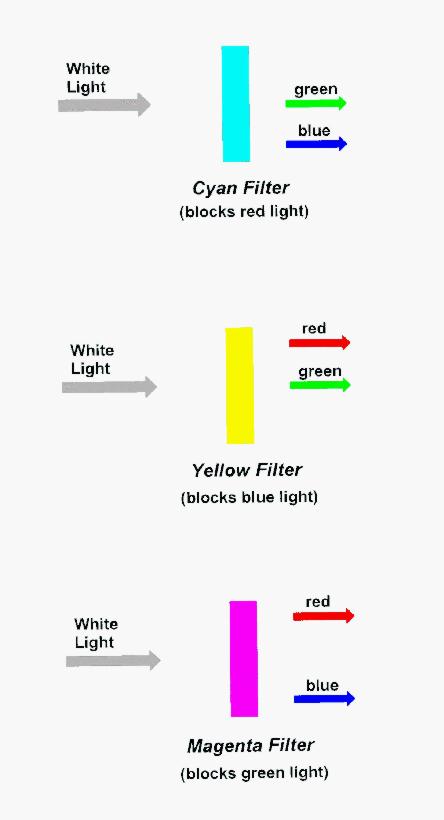
The 10th Century Arab scientist-philosopher Al Hazen found that the common view, the one one held in Europe, was preposterous. He developed an alternative theory in which light traveled in straight lines and that the light emanated from sources such as the sun or a candle instead of the viewer's eye. When this light hit an object the reflected rays carried its image to the viewer's eye. When these rays entered the pupils of the eye, they are focused as the point of a visual cone. This idea was adopted in the Renaissance by artists such as Brunellschi who developed the principles of perspective. More importantly for our discussion of color, Al Hazen investigated the origins of the rainbow using glass spheres filled with water. He found that as the light was refracted by the water, the angle of refraction of separate rays of various components of the light were different. Rays of red light were bent least and blue rays of light were bent most. Thus a "spectrum" of different colored lights that matched the rainbow was produced.

Young's work had the form of a hypothesis. It remained for the physiological psychologist Hermann von Helmholtz a century later to postulate the existence of three types of color receptors, called cones, in the human eye that are stimulated by broad regions of the visible spectrum. Red light in one of these regions stimulated one type of cone, green light from the middle region could stimulate a second type of cone, and blue light in the final region stimulated the remaining cone. The relative degree of stimulation of these cones gives us perception of all of the colors that we see. We perceive sunlight as "white" because radiate from each of the three of the parts of the visible spectrum (red, green, and blue) stimulate the three cones in our eyes.
If an object reflects red and green light but not blue light, my eyes will see it as yellow. If a second object reflects just red and blue light, my eyes will see it as magenta. Yet another object reflecting just blue and green light appears cyan colored.
If you've been reading this skeptically, a good habit in reading, you may be wondering how this can possibly make sense in light of what you learned about colors in kindergarten. At an early age, most of us did a lot of coloring with crayons. We were taught, and soon verified for ourselves, that the primary colors were red, blue, and yellow. Using our crayons, we could combine any two of these to make the secondary colors: blue and red made purple, blue and yellow made green, and red and yellow made orange. The color wheel that we could make with crayons is quite different than Newton's color wheel. The primary colors that we learned in school, were red, blue, and yellow (NOT GREEN).
A CRAYON COLOR WHEEL

| This wheel was made in a similar way to that which we are going to construct our egg tempera color wheels: I used only three pigments. These, when used alone, produced the "primary" colors: red (top), blue (lower left), and yellow (lower right). Each of the "secondary colors", green, orange, and purple, were produced by coloring the same wedge with two different crayons. If you look at the wheel critically you'll notice that something is a bit off: the purple wedge appears very "muddy" -- not a nice purple at all -- and the orange wedge is slightly "muddy" as well. (We are going to spend some time considering why some pigments work well together and why others don't. By the end of the class you should be able to explain this to just about anyone.) |
The idea embodied in our grade-school color wheel is important. Artists have known for a long time that they could prepare a paint of a third color by mixing paints of two pigments. This is useful only if the results are predictable. And our color wheel does just that. It predicts that mixing blue and yellow gives green. In this particular case, it also tells us that the blue and red crayons in my box don't give an especially vibrant purple. Through experience, painters develop a keen sense of which pigments mix well to produce certain colors, which will give muddy colors or bright colors. In our class project, I want you to get some of the experience of being the painter who uses his eyes to tell him which mixtures of pigments will give useful colors for making paint. I also want you to be the chemist, who can use a conceptual model to explain why some new colors in our wheels are muddy and others aren't. Ultimately, we would like to be able to predict the color that would result from mixing two pigments.
| Let's consider for a moment the notion that the colors we see most of the time are the result of some sort of filters subtracting portions of the spectrum. If we had something that would take all of the RED out of WHITE LIGHT, the only two types of cones that would be stimulated in our eyes would be theose sensitive to the green and blue regions and we would see cyan. A cartoon of the three ideal subtractive filters that remove just the red or just the blue or just the green are shown at the right. | 
| |
What would happen if, there were two filters in sequence?
Site Map / Syllabus